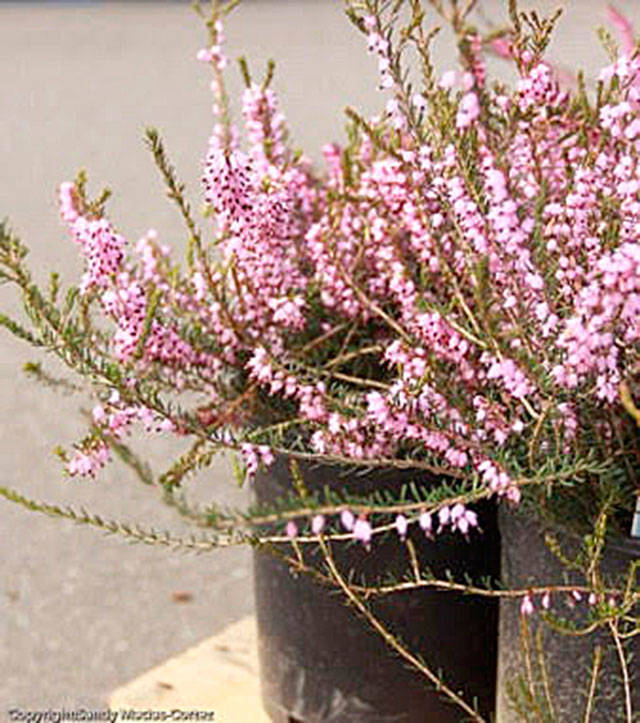The Thursday “Brown Bag” series continues at the Clallam County Courthouse from noon-1 p.m. on April 12. These presentations are open to the public and free of charge, but donations to help support the program are appreciated.
The topic will be “Honeybees: History and Future” with speaker Meg Depew, owner of Sequim Honey Farm.
On Saturday, April 14, the Fifth Street Community Garden will feature a “Garden Walk” from 10-11:30 a.m. Master Gardeners will cover a variety of food crop topics and focus on what is happening in the Clallam County vegetable garden during the month of April.
Plants of the heather family (Ericaceae) represent one of the most useful components of gardens in the Pacific Northwest. Not only are they evergreen and supremely adapted to our climate and soils, but they can also be used to provide color in every season of the year.
While most of the plants in this family are regarded as heathers, there are two major subgroups: the true heathers, genus Calluna, and the heaths, genus Erica. While very similar and often confused, each subgroup has its own botanical characteristics.
Heathers, native to Northwestern Europe, are typically taller and spread sideways at a slower rate than the heaths which are typically lower but faster growing. Generally, heathers are more cold-tolerant than heaths and will usually bloom summer into late fall, sometimes twice.
Heathers occur in nature from as far south as South Africa and north to Alaska, including Ireland, Spain and mainland Europe. Heaths consist of more than 700 species and even more varieties, some growing up to 10-20 feet high and called “tree heathers” due to their size. Heaths have a wider range of colors and are more likely available as winter bloomers.
These plants are best cultivated in peaty, acid soils and will tolerate all soils except those with high lime levels. In native environments they exist in conjunction with mycorrhizal fungi which help them extract required nutrients from poor soils. The best planting times are March through May and then late September through late November. Young plants should be planted with the foliage almost touching the soil surface and mulch drawn back from the main stem.
Watering is essential during spring and throughout dry spells, especially in the first year after planting. Staking or support is generally not required for most cultivars. Plants should be spaced at 12 to 18 inches apart in groups, if possible, to allow for side spreading and filling out in the flower beds.
Propagation can be achieved by layering of larger plants, natural layering of prostrate forms or by taking cuttings of young side shoots which have a little heel of old wood at the base. The bases are dipped in rooting hormone and placed in well-draining potting mix (two parts sand and one part peat).
Are you sold on heath and heather and ready to plant? Let’s assume you want a bed of 18 plants! It’s good to plant in groups of three, so you will need to choose six varieties. Three is the number that fits expertly in a landscape. The trick is in the arrangement. Three plants in a row is dull because you know what to expect. If you have enough space, group them in an equilateral triangle. Don’t forget to leave adequate spacing, about as far apart as the plant’s mature width. Now, sit back and watch! These plants are very low maintenance requiring very little fertilizer and a slight yearly haircut after flowering to remove spent flower heads.
Happy gardening!
Bob Cain is a Clallam County Master Gardener.


